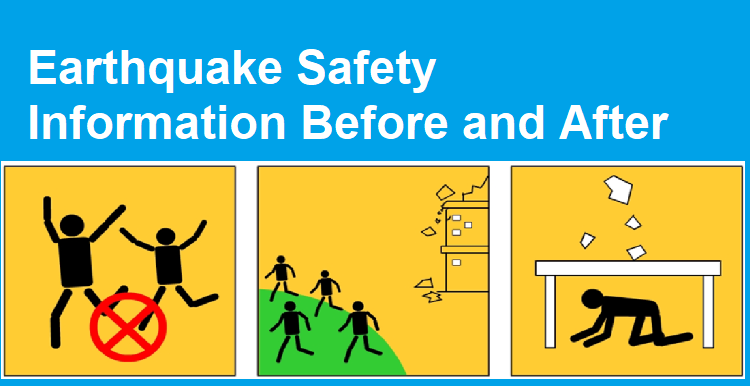Earthquakes, as natural disasters, have the potential to occur suddenly and unexpectedly, resulting in substantial harm to infrastructure and presenting a grave danger to human existence. In order to alleviate these hazards, it is imperative to possess a thorough comprehension of earthquake safety information, both prior to and subsequent to an occurrence. This article aims to delve into the significance of earthquake preparedness, elucidate appropriate actions to be taken during an earthquake, and provide guidance on ensuring personal safety in the aftermath of a seismic event.
Earthquake Safety Information Before and After
Before an Earthquake
Emergency Preparedness Kits:
One of the fundamental elements of ensuring safety during an earthquake is being adequately prepared. It is imperative to construct an emergency preparedness kit, which should encompass non-perishable food items, water, first aid provisions, flashlights, batteries, and essential documents. By having such a kit readily available, individuals and their families can guarantee the possession of vital necessities in the event of an earthquake.
Seismic Retrofitting:
Seismic retrofitting is a crucial procedure for homeowners, aimed at fortifying a building’s structure to effectively endure seismic activities. This comprehensive process encompasses reinforcing the foundation and ensuring the secure placement of heavy objects within the household, thereby mitigating the risk of their displacement during an earthquake.
Family Emergency Plan:
Please create a comprehensive family emergency plan that includes designated meeting locations and communication methods in the event of an earthquake. Additionally, assign specific roles and responsibilities to each family member to ensure preparedness and a coordinated response during times of crisis.
During an Earthquake
Drop, Cover, and Hold On:
In the event of an earthquake, it is crucial to follow the safety protocol of “Drop, Cover, and Hold On.” This entails dropping to the ground, seeking cover under a sturdy piece of furniture, and holding on until the tremors subside. By adhering to these guidelines, you can safeguard yourself from potential harm caused by falling objects and debris.
Stay Indoors:
If you find yourself indoors during an earthquake, it is crucial to remain in place. The majority of injuries tend to occur when individuals attempt to evacuate buildings while the shaking is ongoing. It is advisable to distance yourself from windows and glass doors, and maintain a low position close to the ground.
If Outdoors:
If you find yourself outdoors, it is advisable to distance yourself from buildings, streetlights, and utility wires. Seek out an open area and promptly lower yourself to the ground. Remain in this position until the shaking subsides to minimize the risk of being struck by falling objects.
Check Also: Punjab Driving License Apply Online
After an Earthquake
Assess Injuries:
Make sure to check yourself and others for any injuries. If anyone needs first aid, be sure to provide it and seek professional medical help if necessary. Keep in mind that emergency services may be busy, so it’s important to be prepared to administer basic first aid.
Safety Inspection:
Please carefully examine your environment for any possible dangers. Take note of any gas leaks, electrical problems, or structural damage. If you have any suspicions of a gas leak, it is crucial to shut off the main gas supply and evacuate right away.
Listen to Authorities:
Make sure to stay tuned to emergency broadcasts for the latest updates on the situation and safety instructions. It’s important to follow the guidance of local authorities and be ready to evacuate if needed.
Communicate:
Please utilize your emergency contact plan to communicate with your loved ones and acquaintances. Inform them about your safety and, if applicable, share your current whereabouts in case of evacuation.
Conclusion
Earthquake safety information plays a vital role in safeguarding lives and communities. Prioritizing preparedness, understanding appropriate actions during an earthquake, and implementing necessary measures in the aftermath are essential in significantly mitigating the hazards linked to seismic occurrences. It is crucial to acknowledge that staying well-informed and establishing a comprehensive plan can significantly contribute to the safety and welfare of individuals and their loved ones amidst and following an earthquake.

